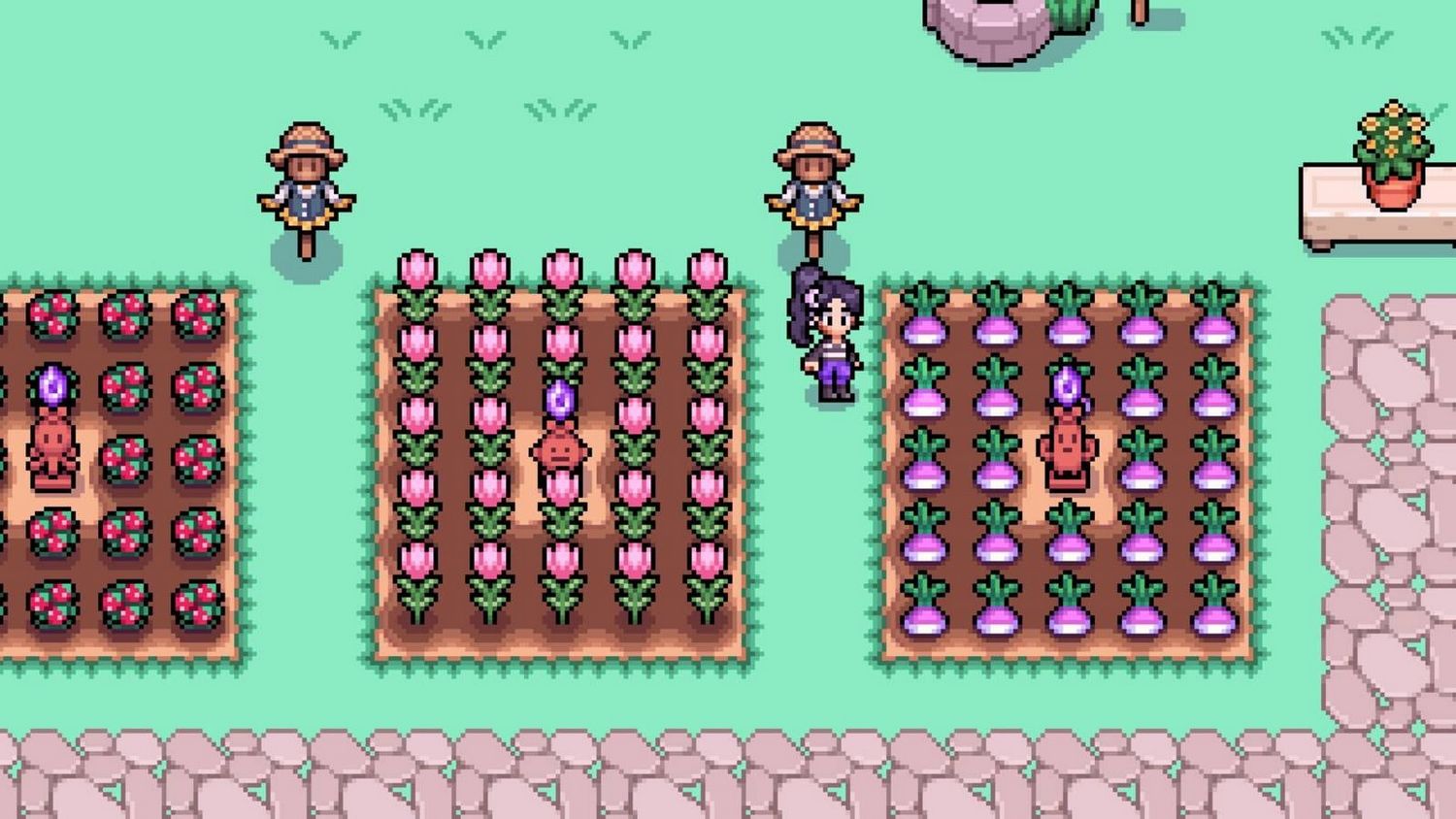More Than a Copycat: How Fields of Mistria Becomes a Stardew Valley Successor
Popular Now
 Free Fire Max
Free Fire Max
 Counter-Strike 2
Counter-Strike 2
 CarX Street
CarX Street
 BeamNG.drive
BeamNG.drive
 Call of Duty
Call of Duty
 Fall Guys
Fall Guys
 Black Myth: Wukong
Black Myth: Wukong
 Valorant
Valorant
 Candy Crush Saga
Candy Crush Saga
 Toca Boca World
Toca Boca World

In the crowded field of life-simulation and farming RPGs, standing out requires more than just mimicking the success of genre titan Stardew Valley. Enter Fields of Mistria, the highly anticipated debut title from tiny build. While it openly embraces the pixel-art aesthetic and cozy, holistic gameplay popularized by ConcernedApe’s masterpiece, Mistria quickly establishes its own identity, proving that there is still fertile ground for innovation within the beloved farming sim formula. Released in late 2024, the game has been met with warm praise, with many critics and players calling it a true successor that builds upon the foundations laid by its inspiration.
The core gameplay loop is instantly familiar: players inherit a rundown homestead, revitalize the land, grow crops, raise animals, and build relationships with the local townsfolk. However, Fields of Mistria distinguishes itself through key mechanical and design choices that create a fresh and compelling experience. The game is set in the idyllic and mysterious town of Mistria, which is nestled beside a sea and a deep, magical forest. This unique setting allows the game to blend traditional farming with elements of high fantasy, something that gives it a distinct narrative flavor.
Distinguishing Features: Where Mistria Grows Its Own Path
1. Deep Magic and Spell Crafting
Perhaps the most significant deviation from the Stardew Valley blueprint is the integration of a comprehensive magic system. Unlike the occasional magical element in other sims, Fields of Mistria makes magic an essential part of the daily routine. Players can learn and cast various spells to help with their farm work, from instantly watering large swathes of crops to magically teleporting from the mines back to their home. Furthermore, the game features a complex Spell Crafting system, allowing players to combine different magical runes and components to create entirely new, custom spells. This adds a powerful layer of personalization and efficiency to the gameplay that is not present in Stardew Valley.
 2. The Town of Mistria and Its Residents
2. The Town of Mistria and Its Residents
The town of Mistria itself feels more alive and reactive. While Stardew’s NPCs are beloved, Mistria’s residents possess more intricate and layered relationships. The game features a substantial cast of over 30 unique characters, including 12 eligible bachelors and bachelorettes. The relationship system introduces a feature called “Rival Relationships,” where certain NPCs will progress in their own courtships and eventually marry each other if the player does not intervene or pursue them. This dynamic system makes the town feel like a genuine, evolving community, rather than a static backdrop to the player’s story.
3. Farming and Ranching Enhancements
While the fundamentals of farming remain, Mistria refines and expands on them. The game introduces the concept of Seasonal Land Modifiers, where different plots of land around the farm have slightly different benefits depending on the season, encouraging strategic crop placement. Ranching also sees a boost with the ability to “Bond with Wild Animals.” Instead of simply purchasing all animals, players can venture into the wilderness and befriend certain creatures, like unique colored sheep or rare cattle breeds, and bring them back to their farm. This adds a satisfying exploration and discovery element to animal husbandry.
4. Comprehensive Customization and Building
The customization in Fields of Mistria is on another level. Players can fully customize the appearance of their house, farm buildings, and even their tools using a robust Design Studio feature. This allows for an unparalleled level of visual personalization, catering to the growing demand for expressive and aesthetically pleasing homesteads. The freedom to design and decorate is nearly as deep as a standalone sandbox building game, making the process of building the ultimate farm incredibly rewarding.
Fields of Mistria doesn’t try to reinvent the wheel, but rather, it polishes the mechanics of the cozy farming genre and adds its own magical twist. By introducing deep spellcrafting, a dynamic relationship system, and enhanced customization, it successfully carves out a niche that is both nostalgic for fans of Stardew Valley and exciting for players looking for a fresh, engaging take on the genre. The game is a charming and substantial entry that proves the pixel-art farming sim is far from running out of seeds to plant.








